Some thoughts and discussions from me.
Hi, friends!
The other day I did a Periscope right before teaching my indoor cycling class on one of my favorite drills to include in my classes. It sparked the idea for this blog post on building your own indoor cycling workout! I’ve written a handful of posts on take and go cycling workouts, take-it-to-the-gym spin sesh, and evem a DIY RPM workout, but this gives instructions on how to create one, start to finish. Now, this isn’t just for instructors. It’s for you if you want to have your own little private spin class between you, your headphones, and your bike.
What Makes a Good Indoor Cycling Class?
The thing about a good spin sesh is that it requires several factors to be on point in order to make it a good workout:
- The music
- Cohesiveness
- Cueing
- The Energy
- Safety
[Tweet “What makes a good indoor cycling class? via @Trainerpaige”]
I’m fortunate enough to teach at a studio that has cool lighting, high tech gadgets, trackers, stats, and projectors. It has all the bells and whistles. And while that is super helpful – especially as an instructor – it’s definitely not required. Use what you have! Even if that’s a stationary bike in your basement!
So what I’m going to do today is take you through how I create a workout for my spin class from start to finish – and then I have a workout for you to take with you and do at the very bottom of the post. Ready? Let’s get those wheels spinning!
[Tweet “How to Build an Indoor Cycling Class – via @trainerPaige”]
How to Build an Indoor Cycling Class
1. Come up with your theme for the class.
Before I even think about music, I brainstorm what type of class I want to run. A class has to have cohesiveness, as I mentioned before, so it’s best not to just throw whatever you feel like doing in all willy nilly. Have an idea of the type of class you’re about to teach or do yourself. Plus, students love hearing what they’re in store for, and as an instructor, it’s kind of key that you tell them 😉
First, let’s cover the terrain. Will it be a hilly ride in the mountains? A flat, speedy ride through the desert? A mixed terrain ride? A ride with a slight incline? Mixed bag? It’s all up to you!
Now that we’ve got our terrain(s) picked out, let’s talk the type of cardio the class will be. There are several choices here, and the below list isn’t necessarily exhaustive:
- HIIT/Intervals – shorter working intervals with rest periods either as long or slightly longer
- Tempo ride – this type would get them working at an intensity they could hold for a longer period of time. Think an endurance ride
- Threshold (just below their lactate threshold for the entire ride) with rest intervals being equal to or half than the working interval
- VO2 Max – this works on increasing their VO2 Max by pushing you just past your threshold. It’s tough! Rest intervals are typically shorter or about the same amount as work intervals
2. Have a rough outline of how the class will go.
At least have a general idea of how you want the class to flow. Of course, it will start with a warm up and end with a cool down, so there’s your starting points.How long will your class be? Will it start out on a flat road and slowly go uphill? Will it be a mix of rolling hills? Will you start out slower and gain speed as you go? Will your intervals change throughout the ride?
Sometimes I’ll even draw a picture of an outline of how my class will go, with the hills, mountains, flats, etc.
Personally, I teach two HIIT classes a week, that are 30 minutes (followed by 30 minutes of TRX.) I typically like to mix up my intervals, having some intervals be completely time-based, and a couple be based off of the music, which can also be fun…
3. Come up with your playlist.
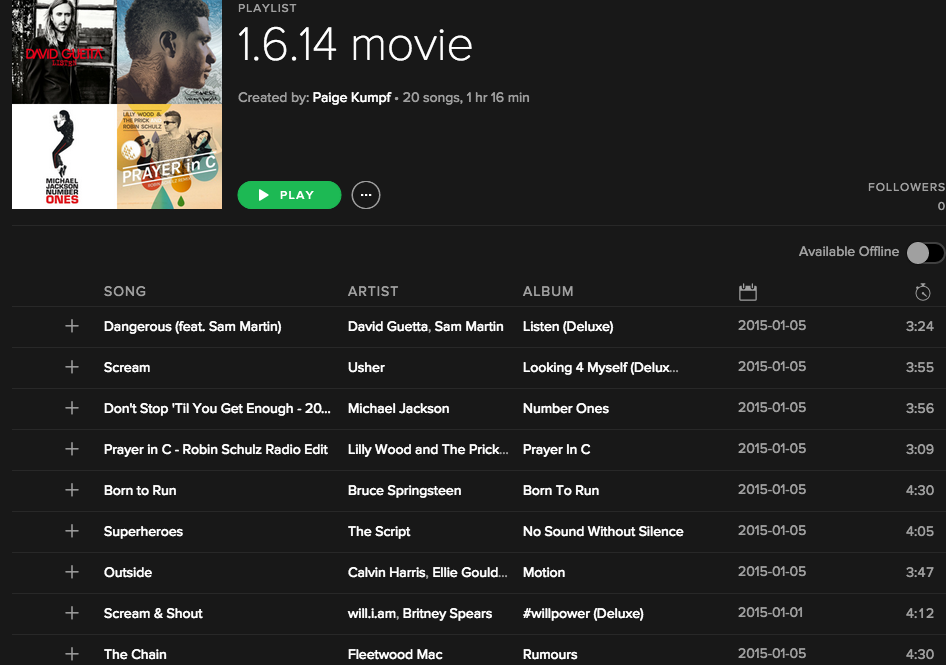
Now that we’ve got your idea for the ride established, it’s time to come up with a playlist. As an instructor and for my own workouts, I use Spotify. I’m not affiliated with them at all, it’s just the most effective and least expensive method I’ve found.Over the past 2 years that I’ve been using Spotify, I’ve come up with about 10 go-to sources for spinning music (another post for another day??) but here’s the criteria I use for picking out my music:
- Use a variety – or at least not all techno/country/rap/etc. Typically classes aren’t just one demographic who like one genre of music. Give a little something for everyone. Of course, if you’re just building for yourself, use only what you like 🙂
- Make sure it has a good beat – especially for hill climbing songs. It drives up the energy and pushes people harder
- Throw in a self-instructed song once a class. My class loves when I include tabata, and I use playlists from isweatfitness that has someone counting down the intervals, which is nice because they go so fast. Plus, then I can joke about the scary evil man telling them to go again and blame the torture on someone else. Muahaha
- Make sure you at least somewhat enjoy the song. I find the class energy is high vibing when I’m really feeling the music and workout myself.
- Use your outline you created in step 2 to determine your playlist
4. Put the outline and the playlist together to come up with your class and make your plan.
Now for the fun part! Line up songs that match the order of your outline.
- Will you be starting out on a flat road? If you’re starting on a flat road at a moderate pace, start with your song that has somewhat of an even, fast-ish paced beat. Now’s not the time to use those house/techno-y song with a heavy, obvious beat.
- Decide on the length and if there will be recoveries. Will there be pick ups? Are you going at an even pace for 4 straight minutes? Or will you be going a little more intensely for 1:45 with a :30 break in between?
- Visualization – can they see the big hill in front of them? Themselves keeping up with the pack? Maybe pushing past that rider in front of them? See themselves passing the finish line?
- Feel – can they feel the headwind that’s making the resistance tougher? Their hamstrings pulling the pedal back up and around? Their upper body relaxed? I like to use “feel” cues a lot when cueing form.
- Motivational phrases – push past it, dig deep, what have you got left? etc. etc.
- Stories – during an especially long interval, I’ll even tell interesting stories I’ve got to give them a slight reprieve
- Singing. Ugh. just no. please don’t.
- Repeating cheesy lyrics in the song (I really try not to do this often, unless I have something else to say about it.)
Use this format for the remainder of your workout. Hill climbing typically has a strong, solid beat. Hill intervals typically has a strong beat, but with varying tempos throughout the song.Some of my favorites include a song that has a slow build up for the hill, and then gets super fast, once we’ve reached the top of that hill. Feel free to let the music help you determine this in some songs.
5. Come up with your cueing.
This could also be an entirely separate post in itself (any interest in that? I’m not sure how many indoor cycling instructors I have reading…) This is where your personality really shows up in the class. How will you motivate your class (or yourself) to push past that big hill, or not give up on that intense interval?
When cueing, I typically speak with these factors in mind:
And a couple things I personally don’t like when instructors do:
And now you should be able to create your own indoor cycling class! Here’s one I did last week:
[Tweet “30-Minute Indoor Cycling Class – via @TrainerPaige #fitfluential”]
Those are the 5 main factors to consider when creating your indoor cycling class. I typically have an outline of my class with me, including the intervals. I think a class can really tell if the instructor is prepared for the class, or just flying by the seat of their pants, and everyone can typically tell when the latter is happening. You could also take other instructors classes, which helps you to see how someone else does it differently. Of course, keep an open mind here, and know that your way is clearly not the only way, and probably not the best way. We should always learning and getting better – in all areas of life 🙂
Have you taken a spinning/indoor cycling class before? Do you like them?

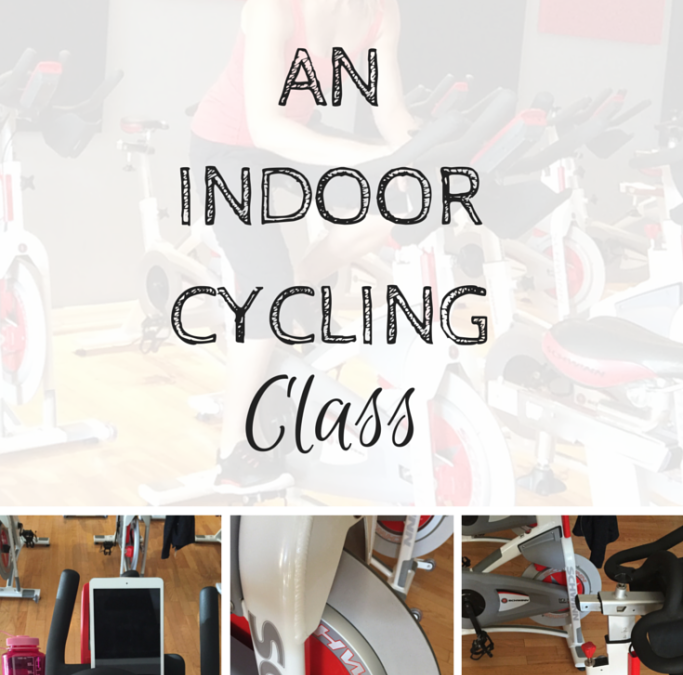
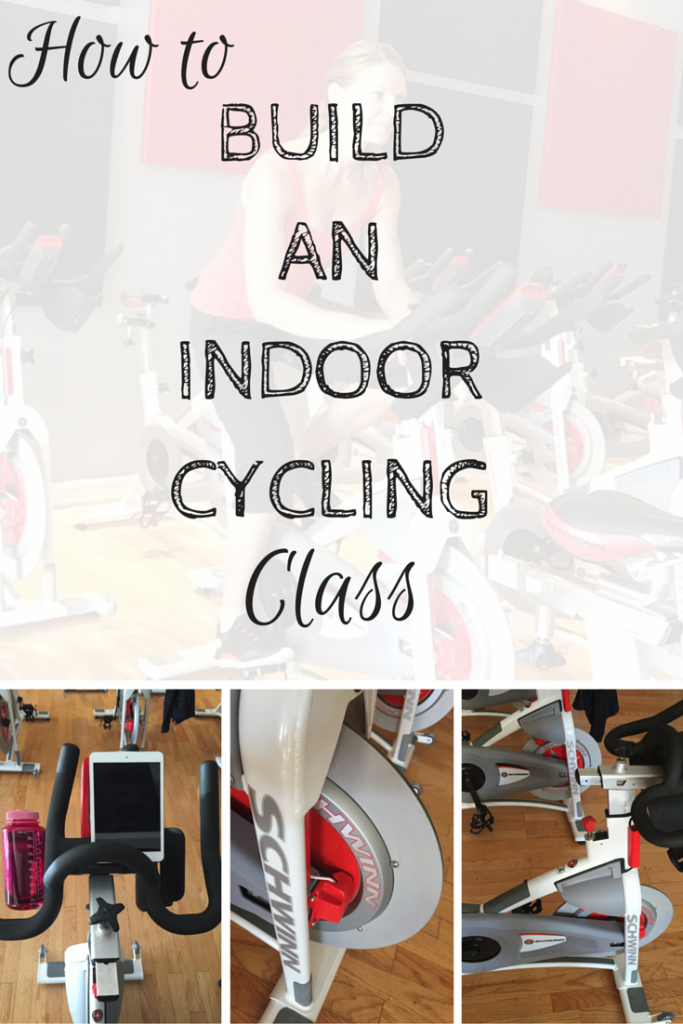
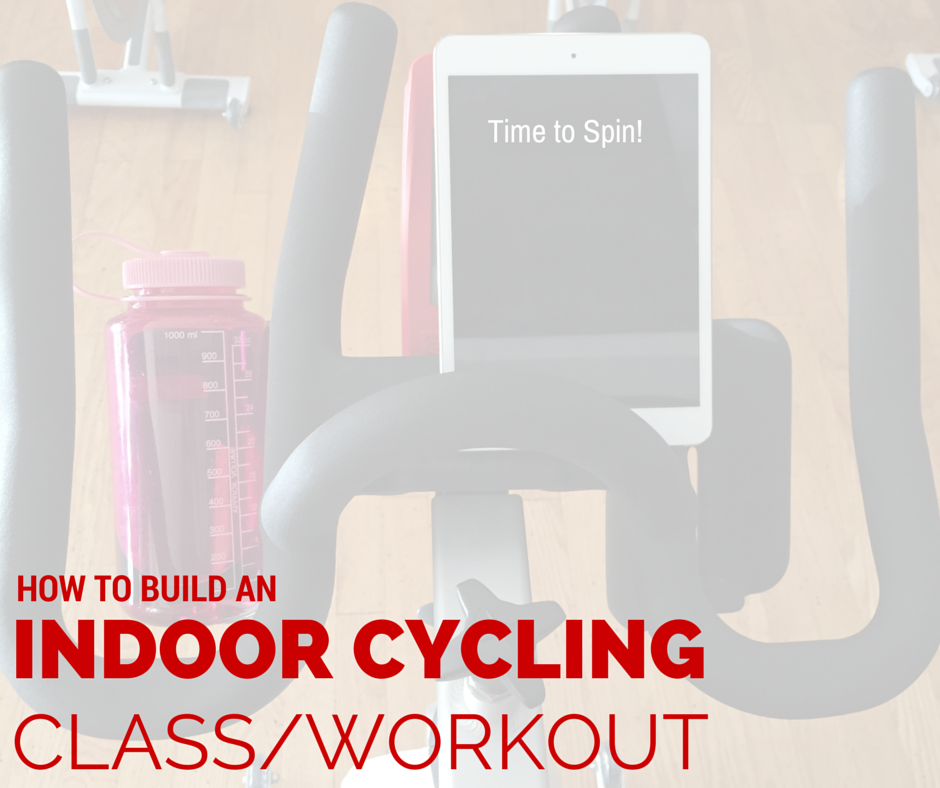
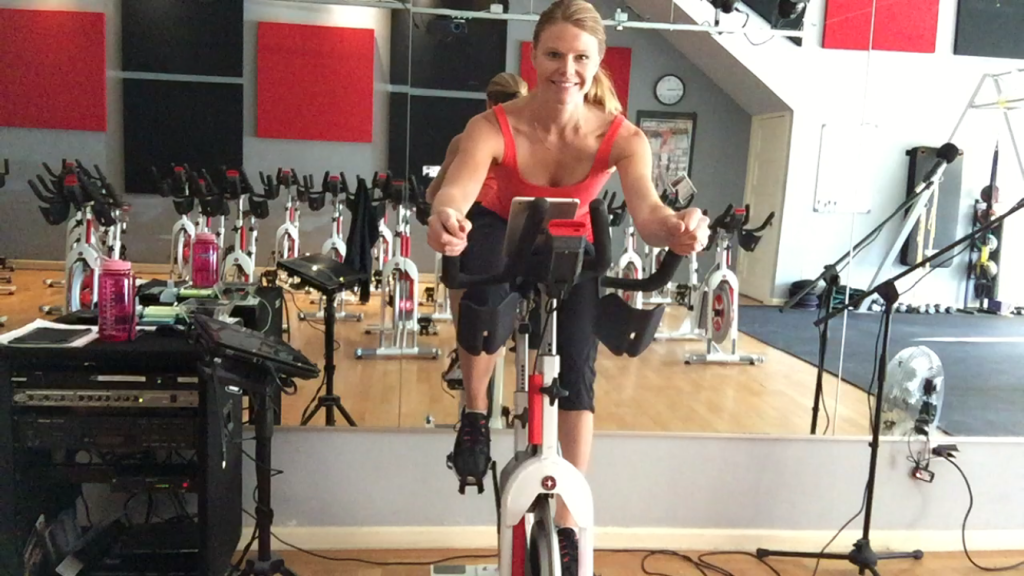
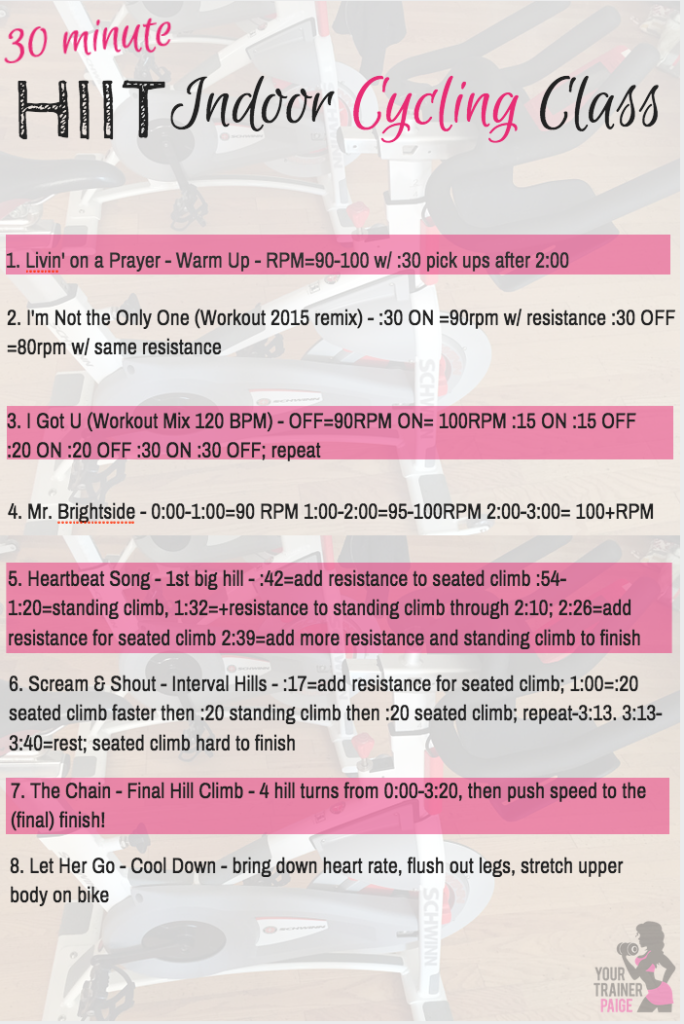
I vote yes for a post on cueing, as someone who is getting certified as a Spinning instructor this fall 🙂
Thank you for the post! Love hearing your approach and what steps you take to build a class.
Thanks for the input, Lauren! Will do 🙂 And best of luck with your Spinning cert and instructing!
The great spin class i take for cross-training from running, is a highlight of the week! There is nothing like starting off the morning with fun music and a great sweat session.
I completely agree, Laura! Such an infectious energy 🙂
I’ve been a Spinning instructor for 3 years and I couldn’t agree with you more on these tips! This is a great tutorial for people who really want to design a RIDE not just a workout. You know how it’s all about the mind/body connection! 🙂